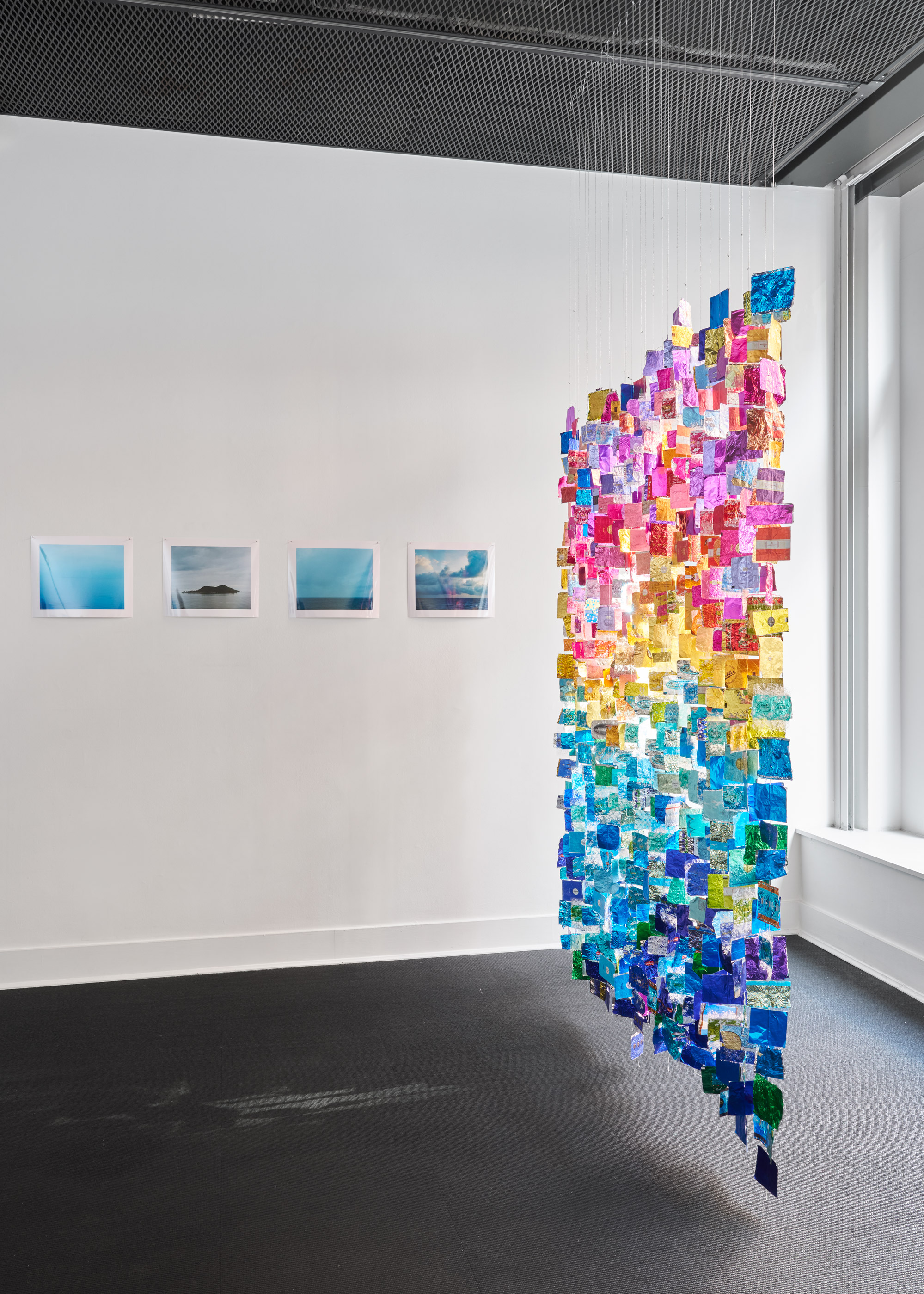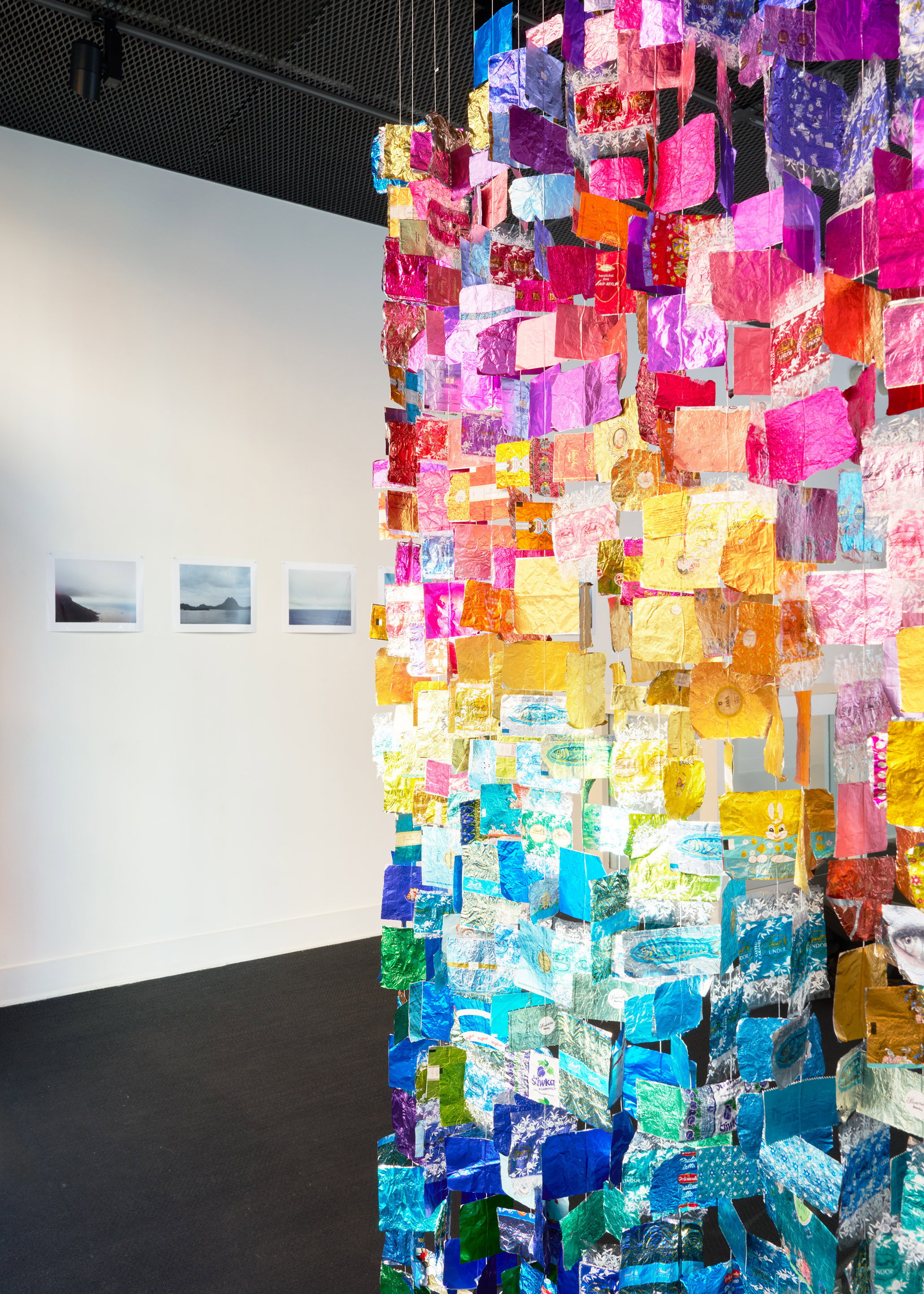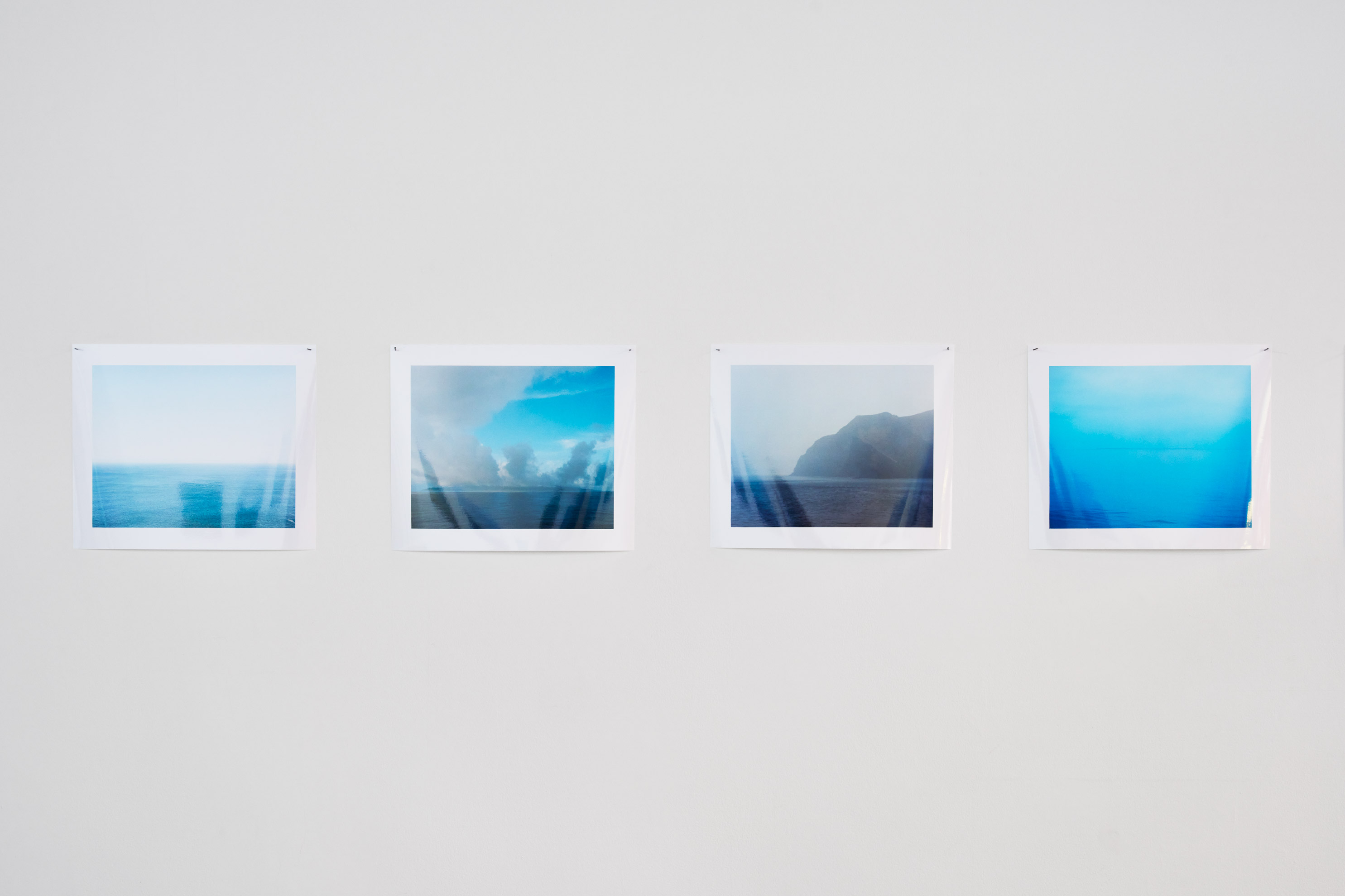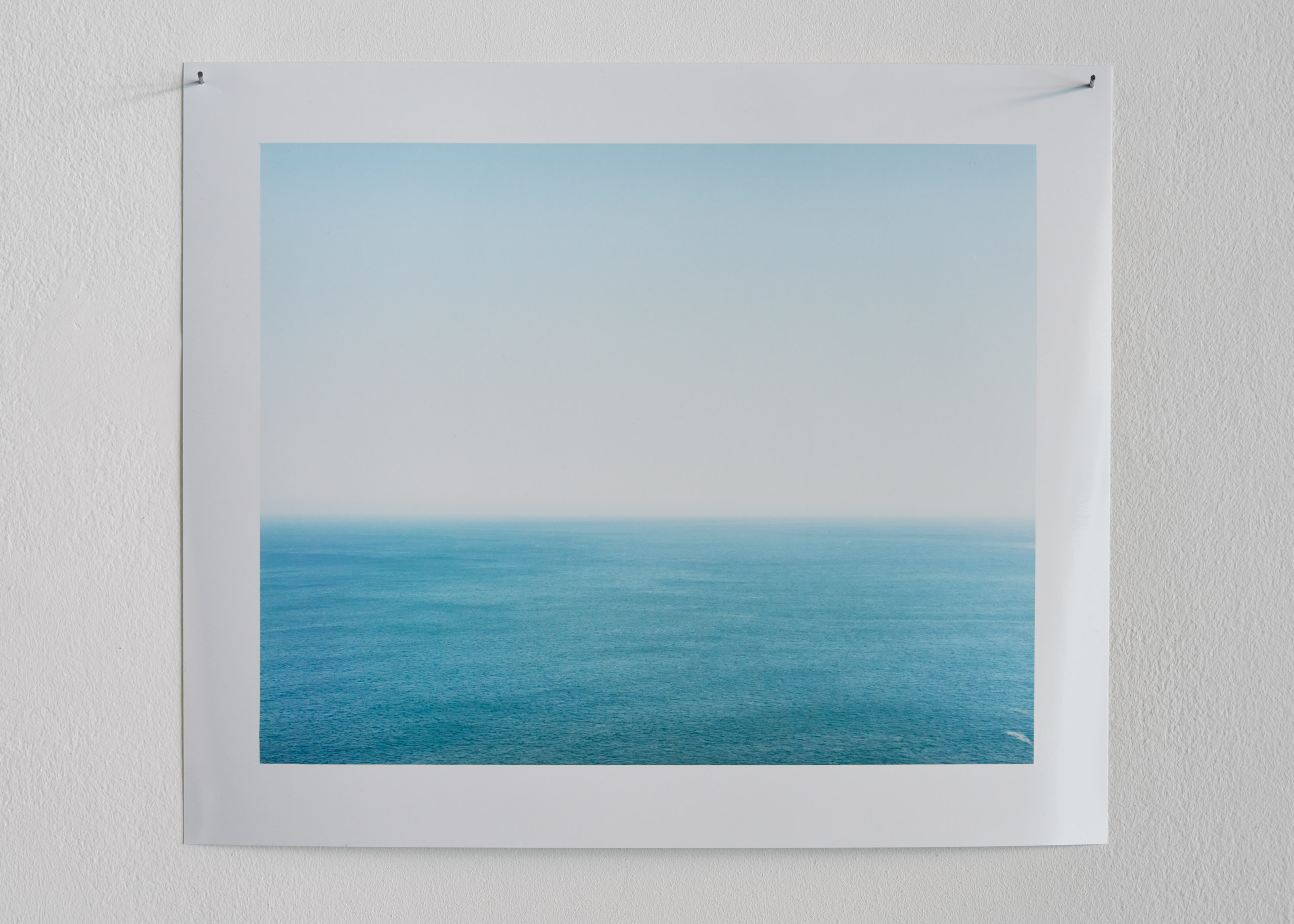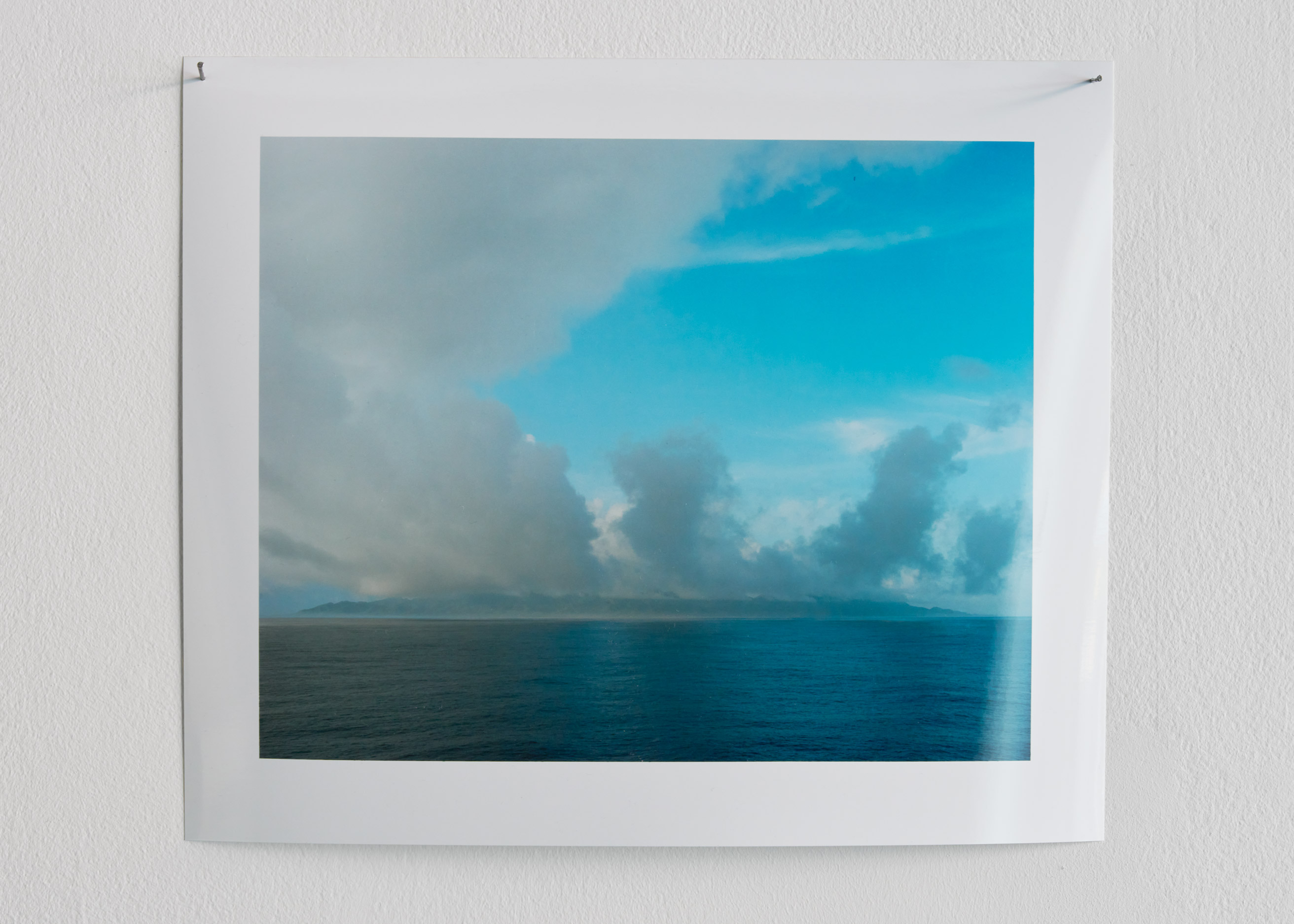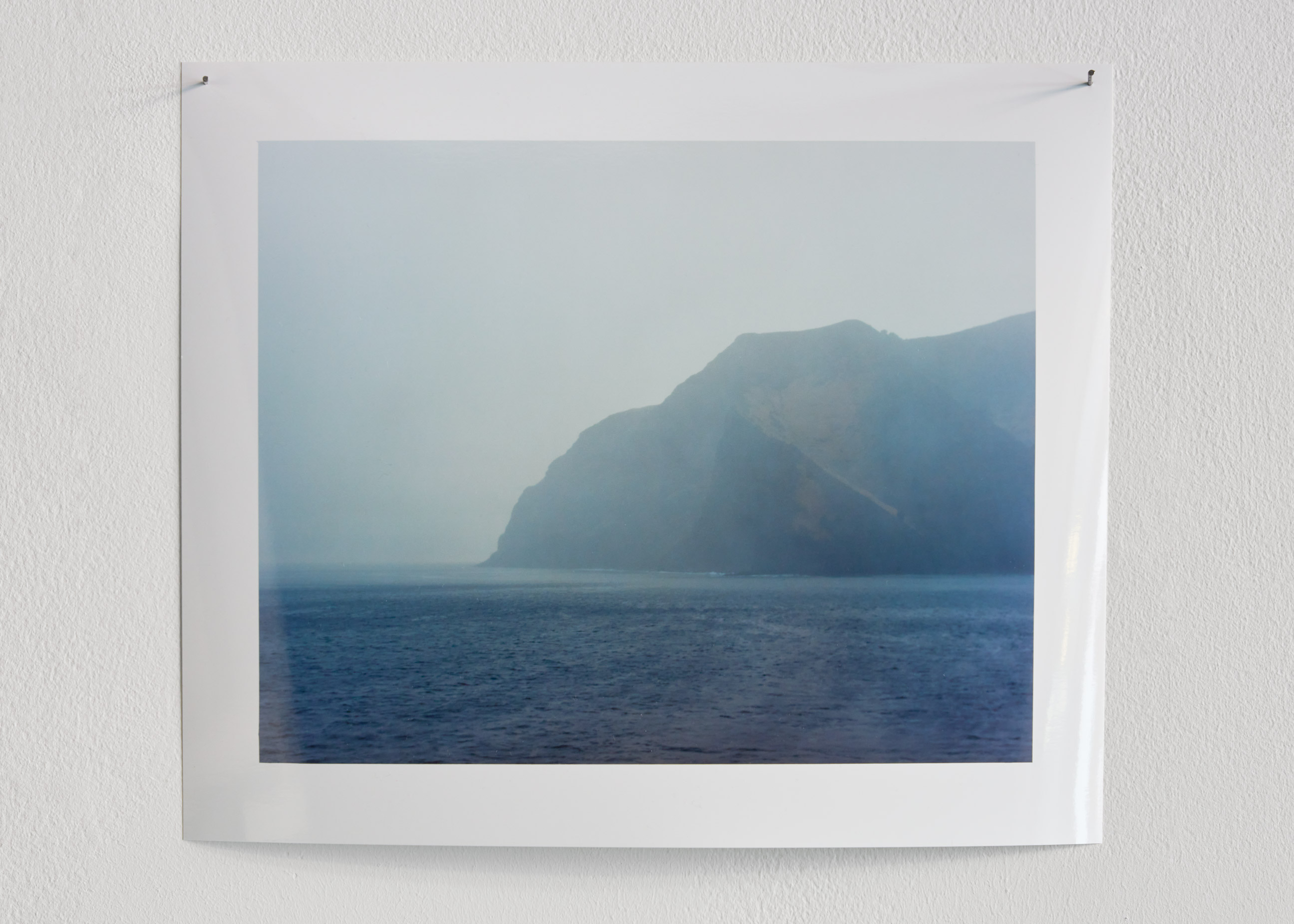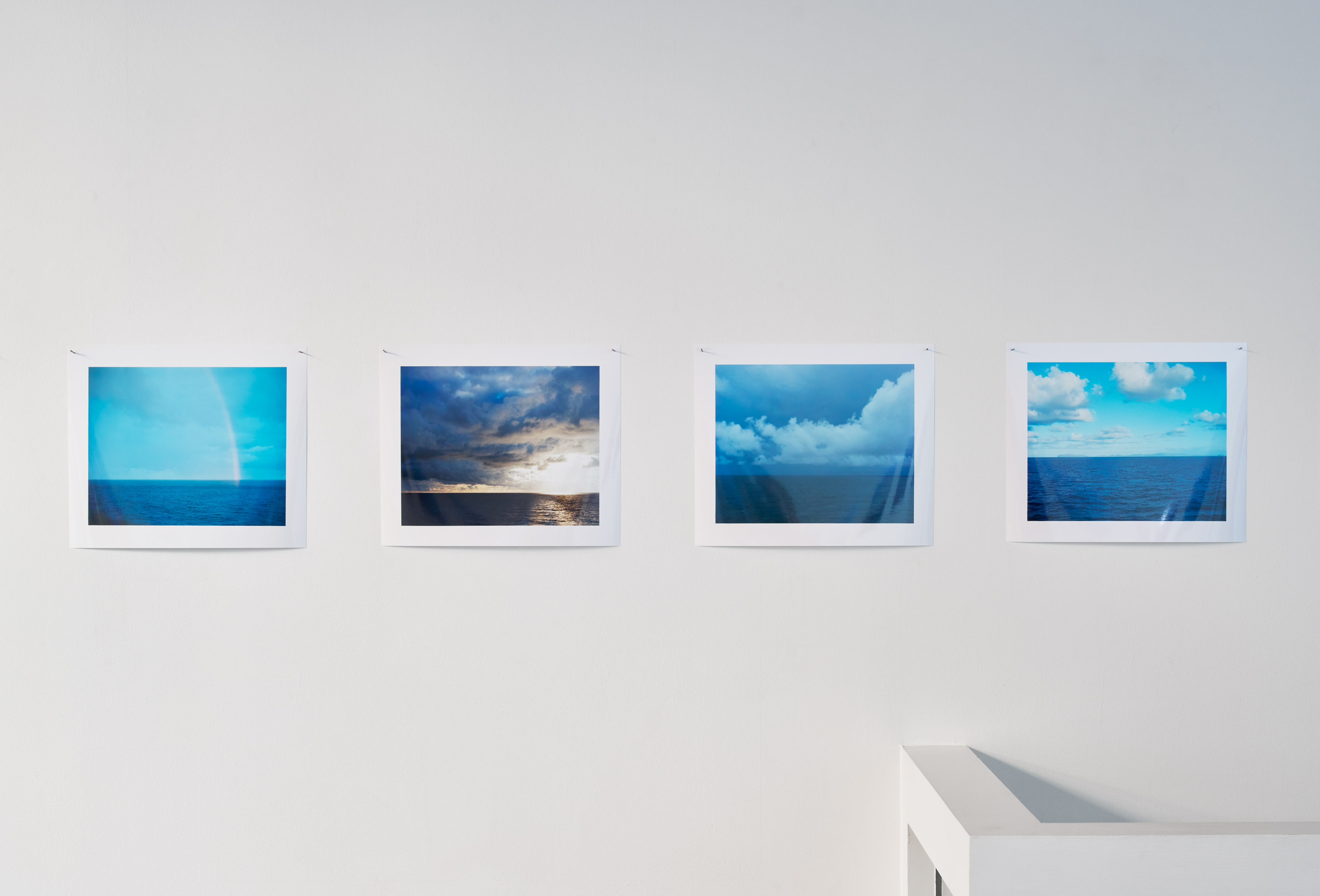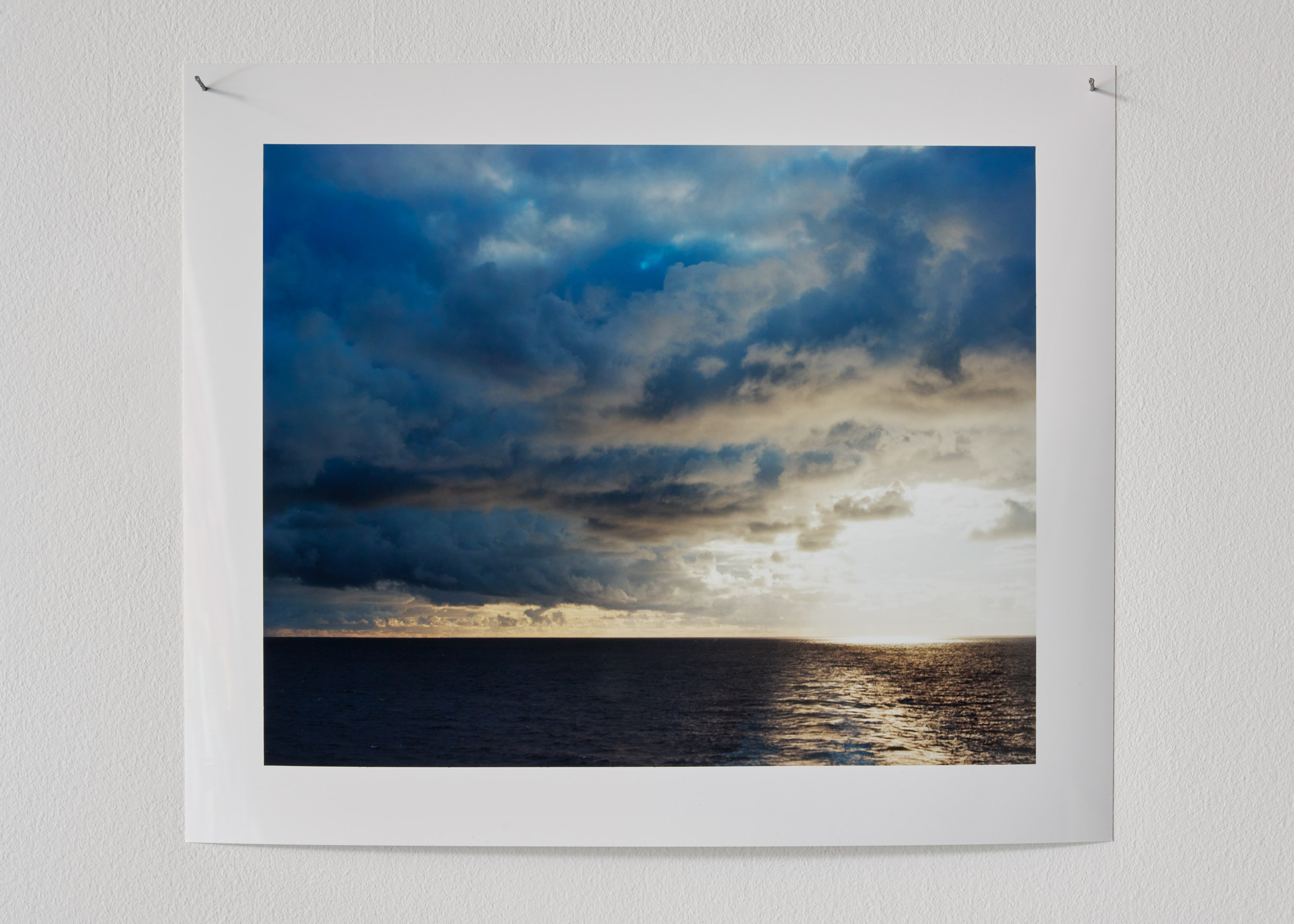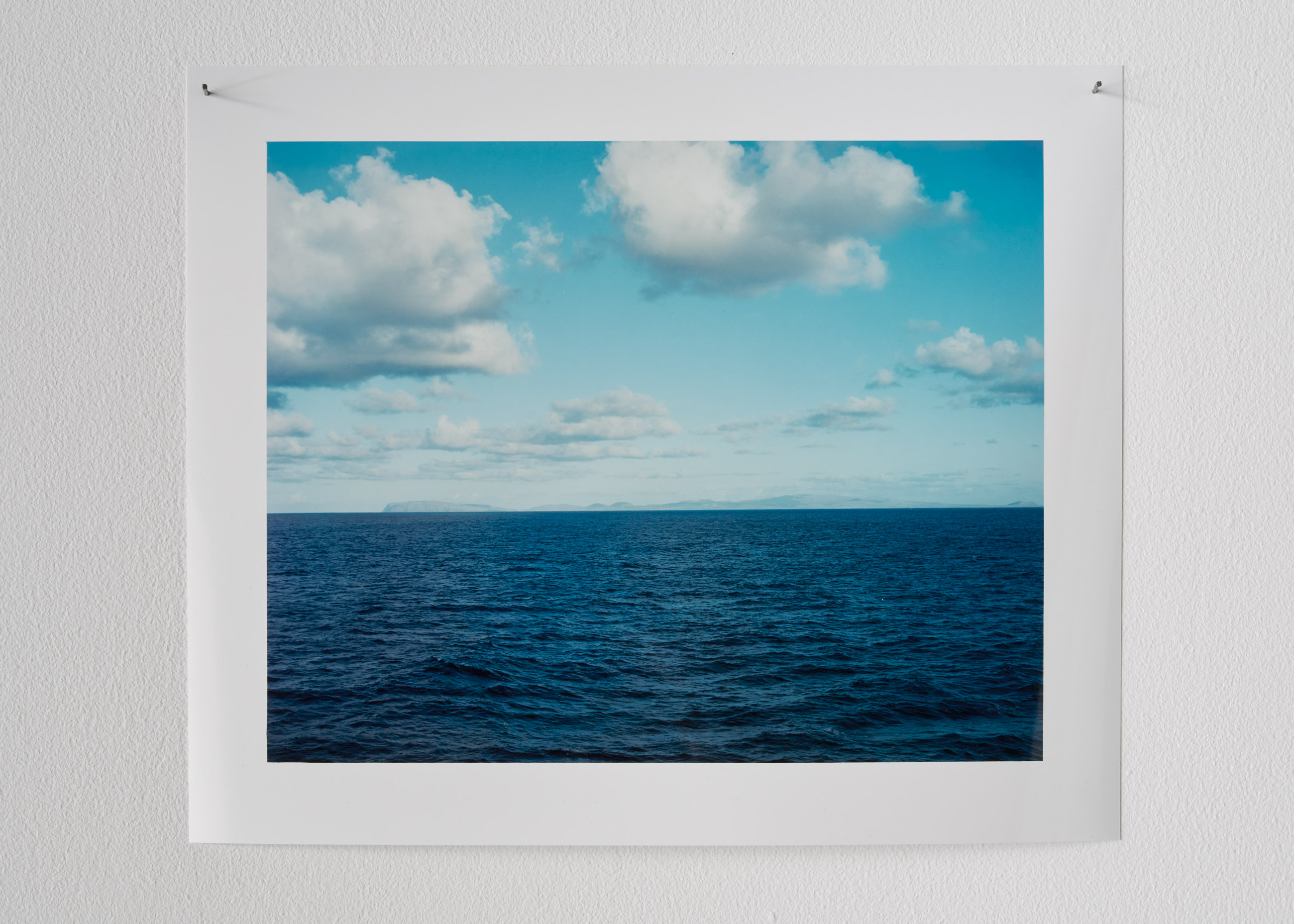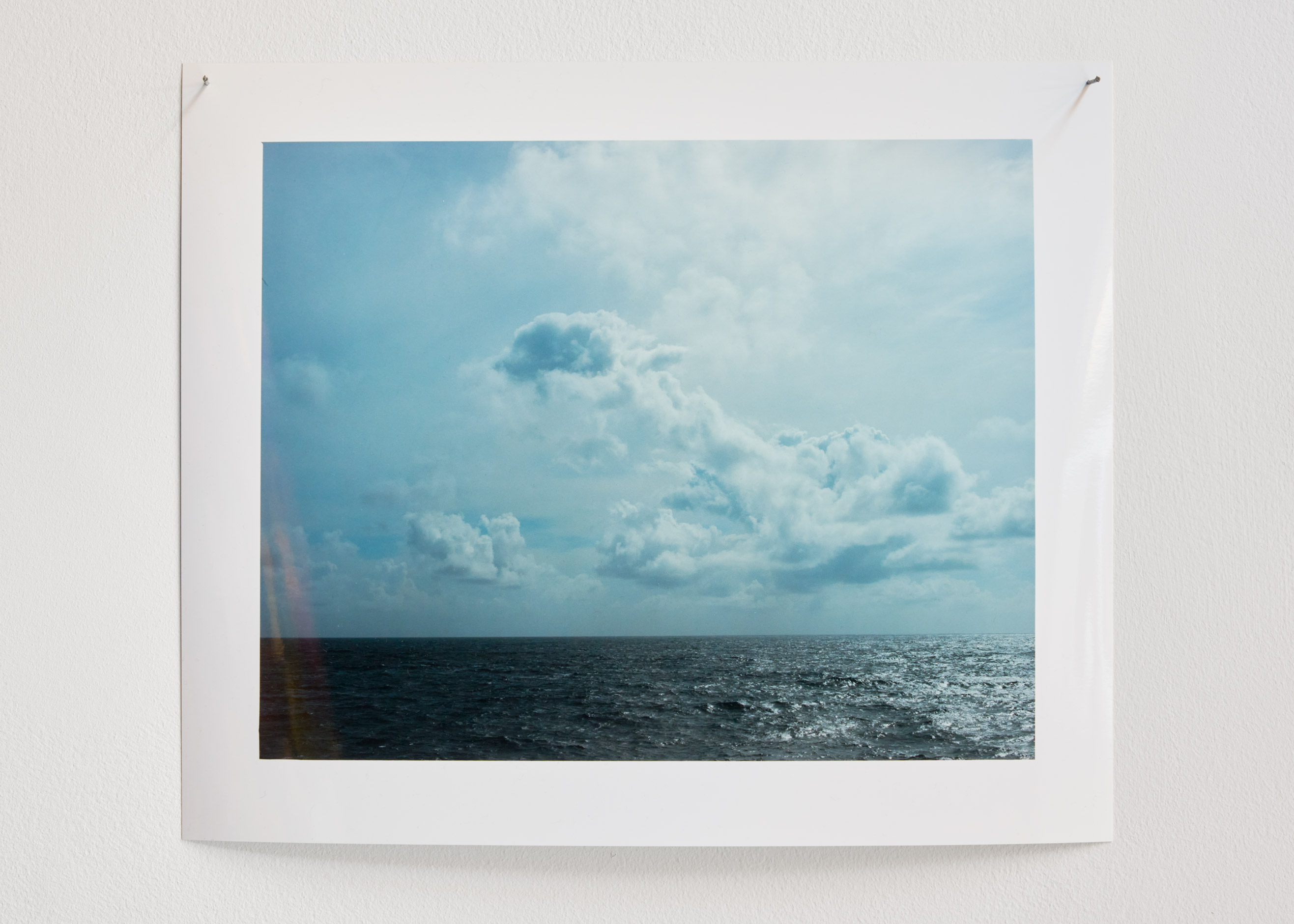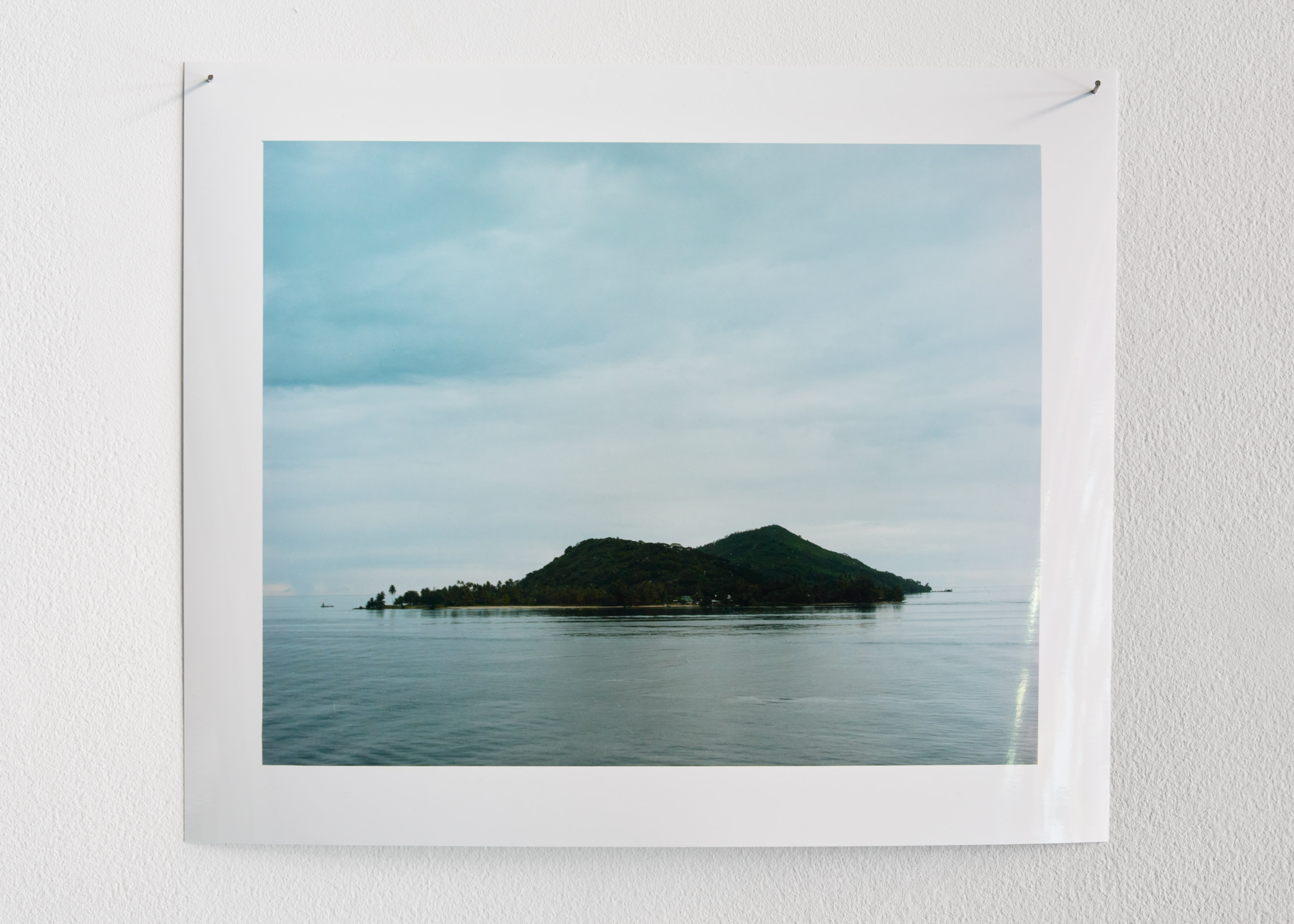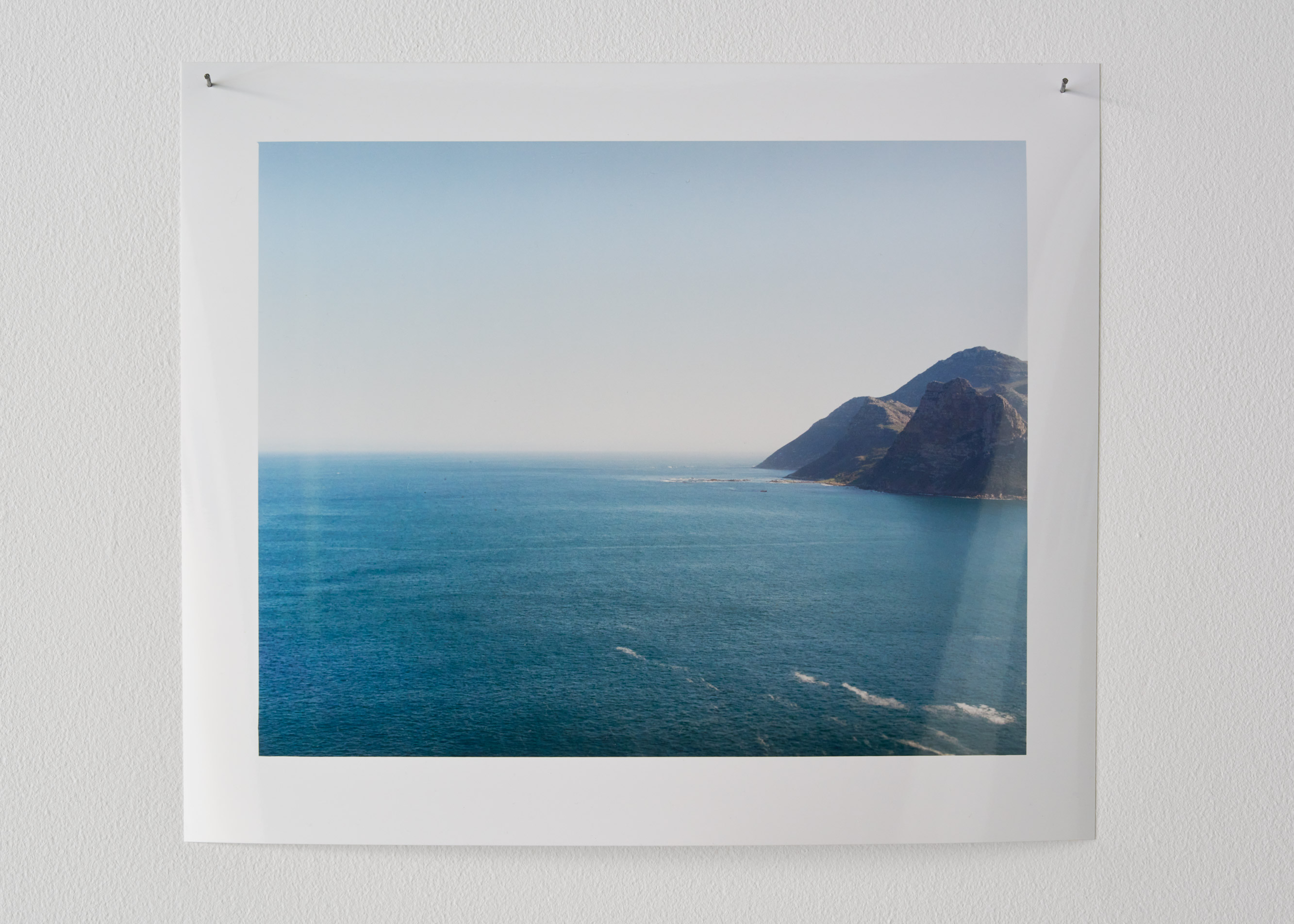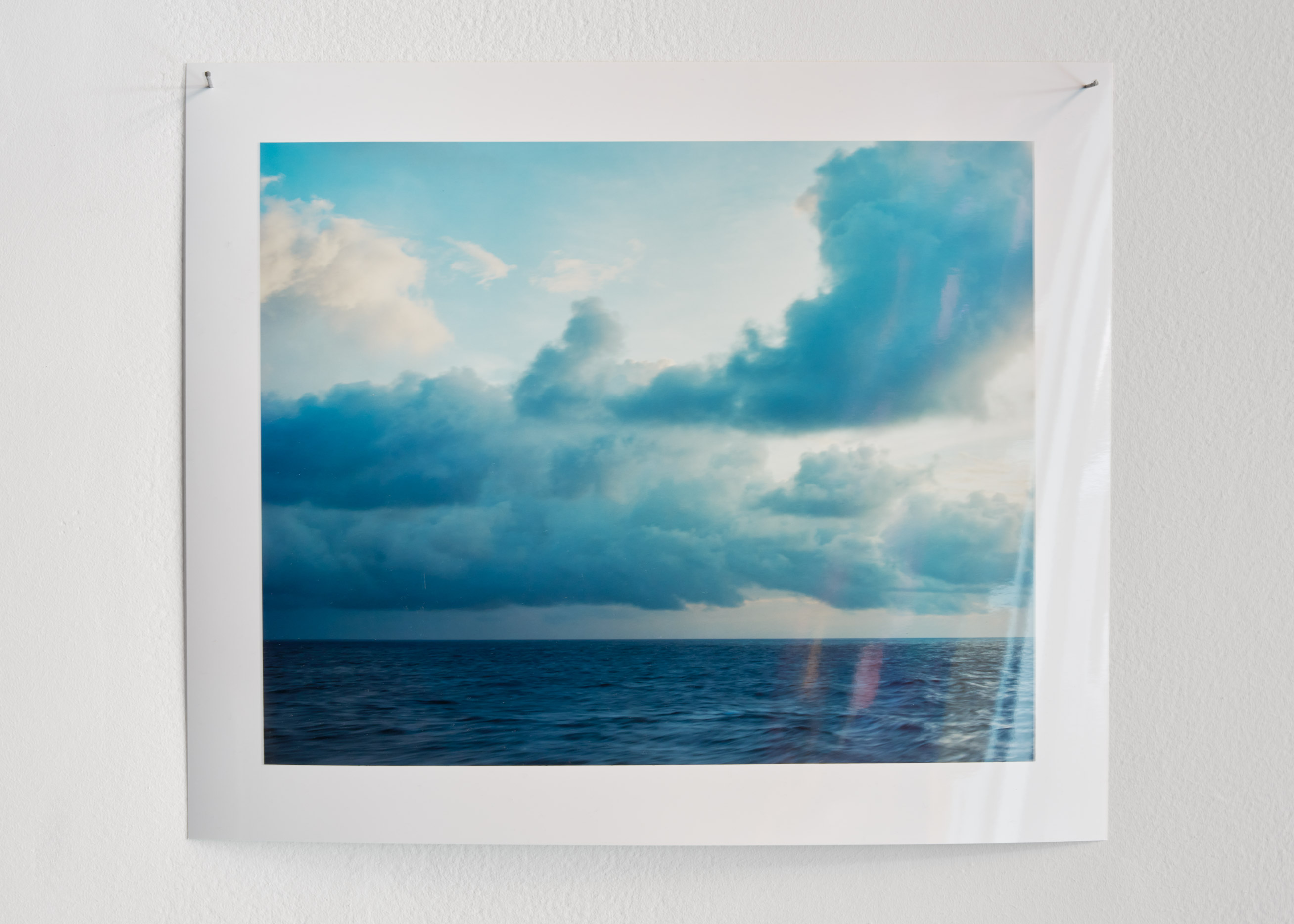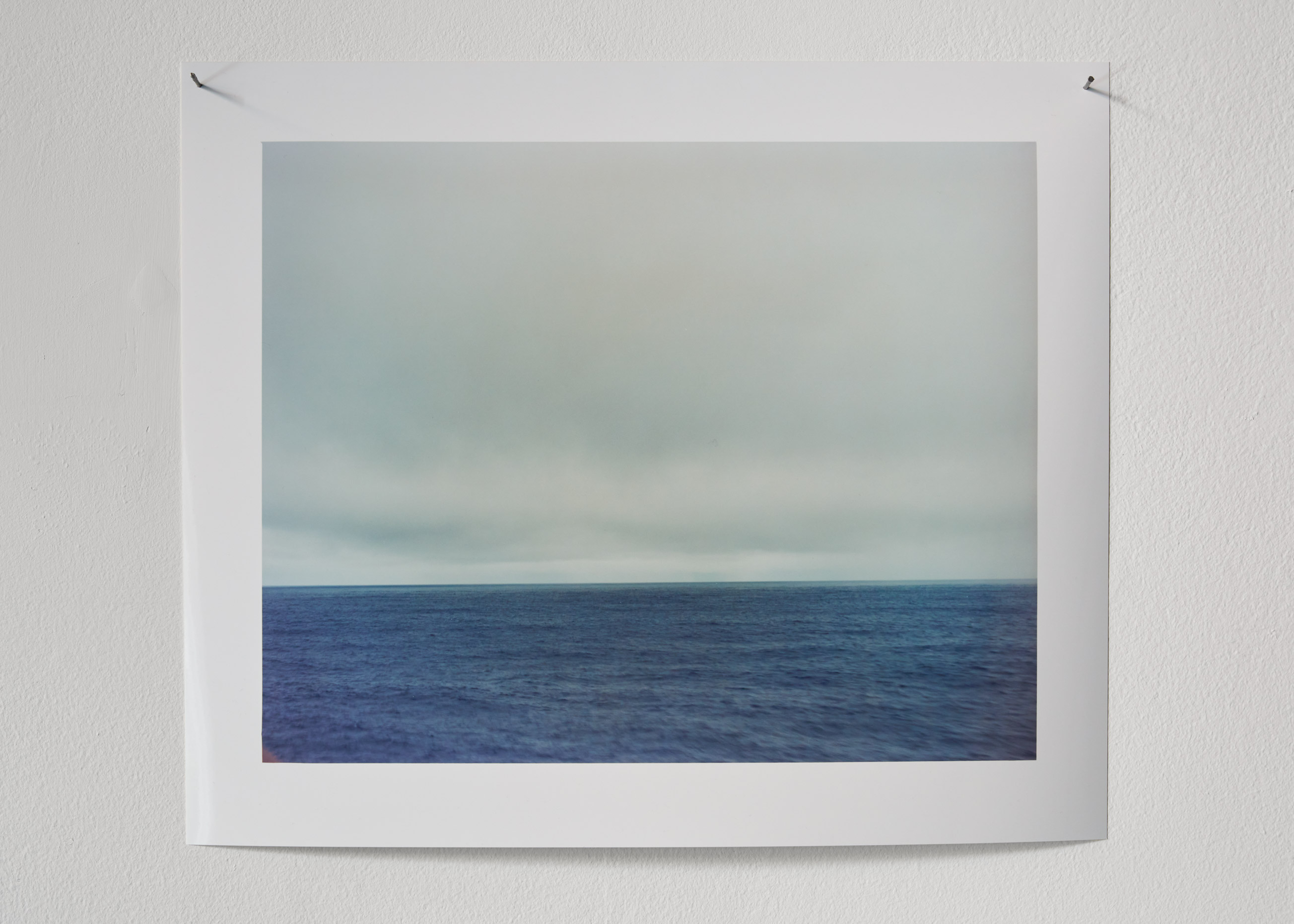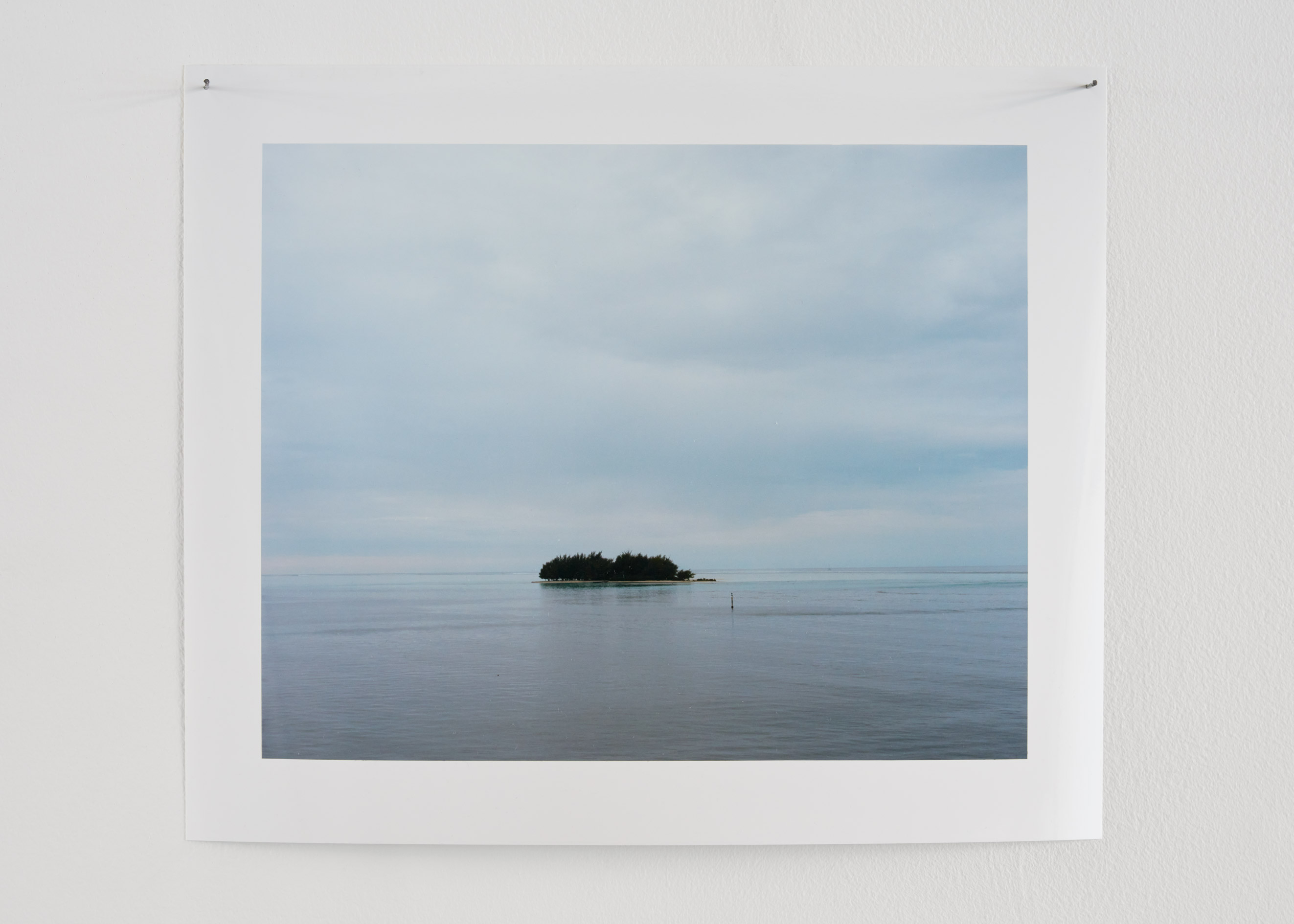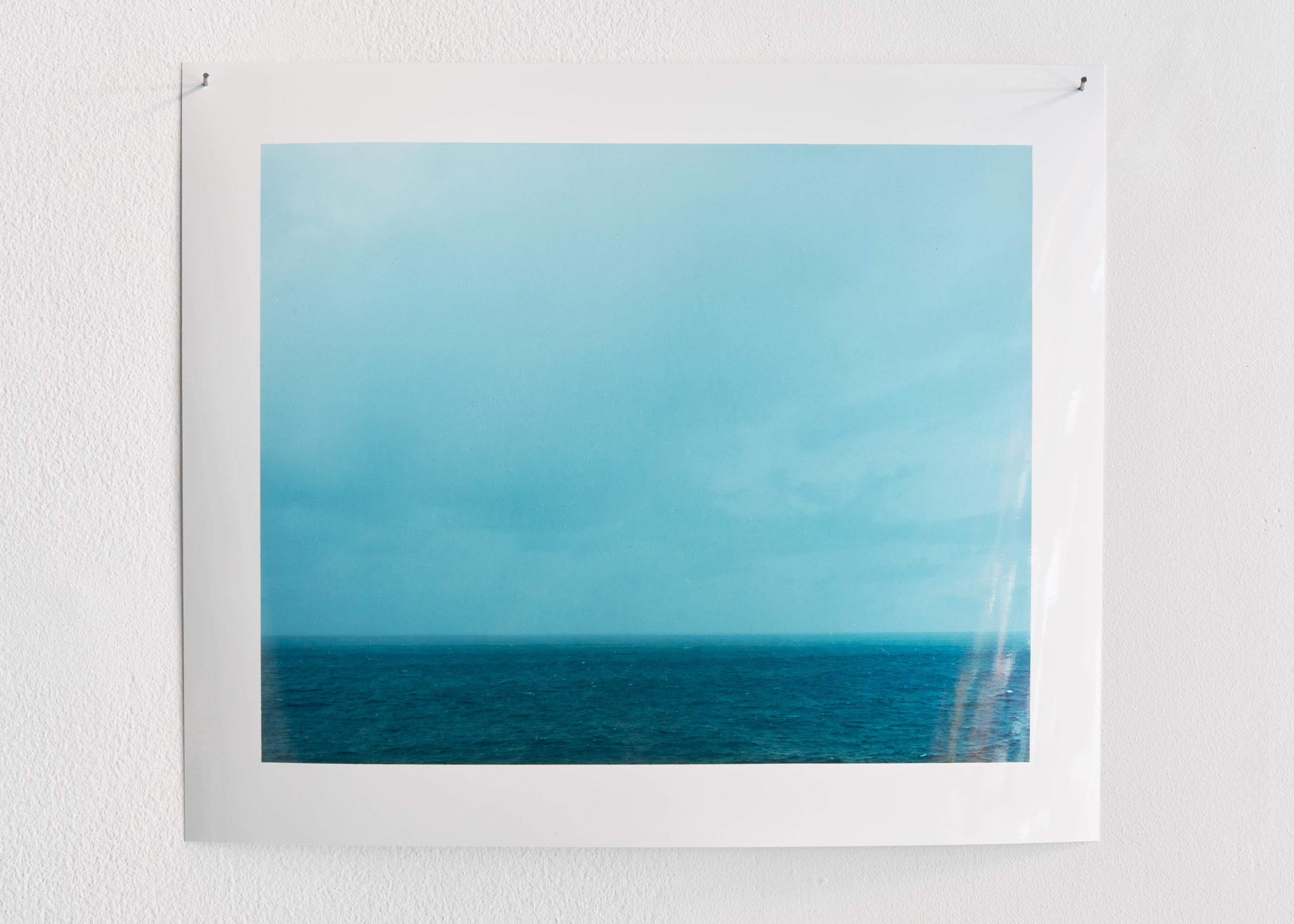19 November 2025 — 06 February 2026
Indien: Hanna Mattes & Eva Mattes
Hanna Mattes • Eva Mattes
Installation View
On a rooftop in Berlin, Eva and Hanna — mother and daughter — speak of a house in Brandenburg called “India.” It is not India; it is here. Horizons captured day after day on the Pacific meet a shimmering curtain of praline foils. “If I put the cup here and say it is art, then it is art,” Hanna insists, and the house seems to nod. Their words oscillate — loud / quiet, grief / joy, domestic / monumental — until the imagined praline is unwrapped, comma by comma, each glittering paper a window. Eva says — dušo moja; I hear my grandmother’s refrain srce moje—and the house called India becomes a compass: for inheritance, for love, for the fragile line where water turns to air.
by Marija Grujić
Installation View
Installation View
Eva Mattes
Born in Tegernsee in 1954, to the Budapestian actress and dancer Margit Symo, and the Viennese composer and conductor Willy Mattes, the stage announced Eva Mattes while only twelve, with film swiftly ensuing. Since 1966, Eva has led and supported two hundred characters in feature film, televised film and theatrical production, with R. W. Fassbinder, Werner Herzog, Michael Verhoeven and Peter Zadek among her directors. A foremost figure within New German Cinema, her performances are honoured and awarded by the Bavarian Film Awards, the Cannes Film Festival and the German Film Awards.
Eva Mattes, untitled (20 years), 2025
chocolate wrappers on lurex string (27 pcs.), 150 x 190 cm (dimensions variable)
£5,000 (ex. VAT)
Eva Mattes, untitled (20 years), 2025
chocolate wrappers on lurex string (27 pcs.), detail , 150 x 190 cm (dimensions variable)
£5,000 (ex. VAT)
Installation View
Installation View
Hanna Mattes
Born in Munich in 1980 to the Austro-German actress Eva Mattes and the Bavarian filmmaker Werner Herzog, Hanna Mattes’ introduction to narrative was distinct and advanced. Narrative was not only entertainment but a tool with which to transform and to understand. Through analogue photography, text and sound, Hanna explores narrative storytelling and its power in shaping perception and meaning. Unfolding at the intersection of fiction and reality, there is strong focus on ecology and the Anthropocene – landscapes, memories and mythologies as spaces where human and more-than-human worlds meet.
Installation View
Hanna Mattes, The Horizon Is Too Loud (week 3 towards Australia), 2025
C-print on glossy paper, 24 x 30 cm
£500 (ex. VAT)
Hanna Mattes, The Horizon Is Too Loud (week 3 Tonga), 2025
C-print on glossy paper, 24 x 30 cm
£500 (ex. VAT)
Hanna Mattes, The Horizon Is Too Loud (week 1 Robinson Island), 2025
C-print on glossy paper, 24 x 30 cm
£500 (ex. VAT)
Hanna Mattes, The Horizon Is Too Loud (week 2 Bora Bora), 2025
C-print on glossy paper, 24 x 30 cm
£500 (ex. VAT)
Installation View
Hanna Mattes, The Horizon Is Too Loud (week 1 rainbow in front of Hanga Roa), 2025
C-print on glossy paper, 24 x 30 cm
£500 (ex. VAT)
Hanna Mattes, The Horizon Is Too Loud (week 1 Robinson Island), 2025
C-print on glossy paper, 24 x 30 cm
£500 (ex. VAT)
Hanna Mattes, The Horizon Is Too Loud (week 3 in front of Fiji), 2025
C-print on glossy paper, 24 x 30 cm
£500 (ex. VAT)
, The Horizon Is Too Loud (week 1 on the way to Hanga Roa), 2025
C-print on glossy paper, 24 x 30 cm
£500 (ex. VAT)
Hanna Mattes, The Horizon Is Too Loud (week 1 from Hanga Roa to Tahiti), 2025
C-print on glossy paper, 24 x 30 cm
£500 (ex. VAT)
Hanna Mattes, The Horizon Is Too Loud (week 2 Cook Island), 2025
C-print on glossy paper, 24 x 30 cm
£500 (ex. VAT)
Hanna Mattes, The Horizon Is Too Loud (week 2 in front of Rarotonga), 2025
C-print on glossy paper, 24 x 30 cm
£500 (ex. VAT)
Hanna Mattes, The Horizon Is Too Loud (week 2 from Hanga Roa to Tahiti), 2025
C-print on glossy paper, 24 x 30 cm
£500 (ex. VAT)
Hanna Mattes, The Horizon Is Too Loud (week 3 from Tonga to Fiji), 2025
C-print on glossy paper, 24 x 30 cm
£500 (ex. VAT)
Hanna Mattes, The Horizon Is Too Loud (week 2 Cook Island), 2025
C-print on glossy paper, 24 x 30 cm
£500 (ex. VAT)
, Hanna Mattes, The Horizon Is Too Loud (week 1 from Hanga Roa to Tahiti), 2025, C-print on glossy paper, 24 x 30 cm 1, 2025
C-print on glossy paper, 24 x 30 cm
£500 (ex. VAT)
Hanna Mattes, The Horizon Is Too Loud (week 2 from Hanga Roa to Tahiti), 2025
C-print on glossy paper, 24 x 30 cm
£500 (ex. VAT)
Hanna Mattes, The Horizon Is Too Loud (week 2 Rarotonga), 2025
C-print on glossy paper, 24 x 30 cm
£500 (ex. VAT)
Hanna Mattes, The Horizon Is Too Loud (week 3 from Cook Island to Tonga), 2025
C-print on glossy paper, 24 x 30 cm
£500 (ex. VAT)
Hanna Mattes, The Horizon Is Too Loud (week 2 Cook Island), 2025
C-print on glossy paper, 24 x 30 cm
£500 (ex. VAT)
Hanna Mattes, The Horizon Is Too Loud (week 3 towards Australia), 2025
C-print on glossy paper, 24 x 30 cm
£500 (ex. VAT)
At Home in India in Brandenburg
A magical-realist interview with Eva & Hanna — where a house called “India” turns into a compass. Horizons and sweet-wrapper foils, grief and play, loud and quiet sides: art letting distance feel like home.
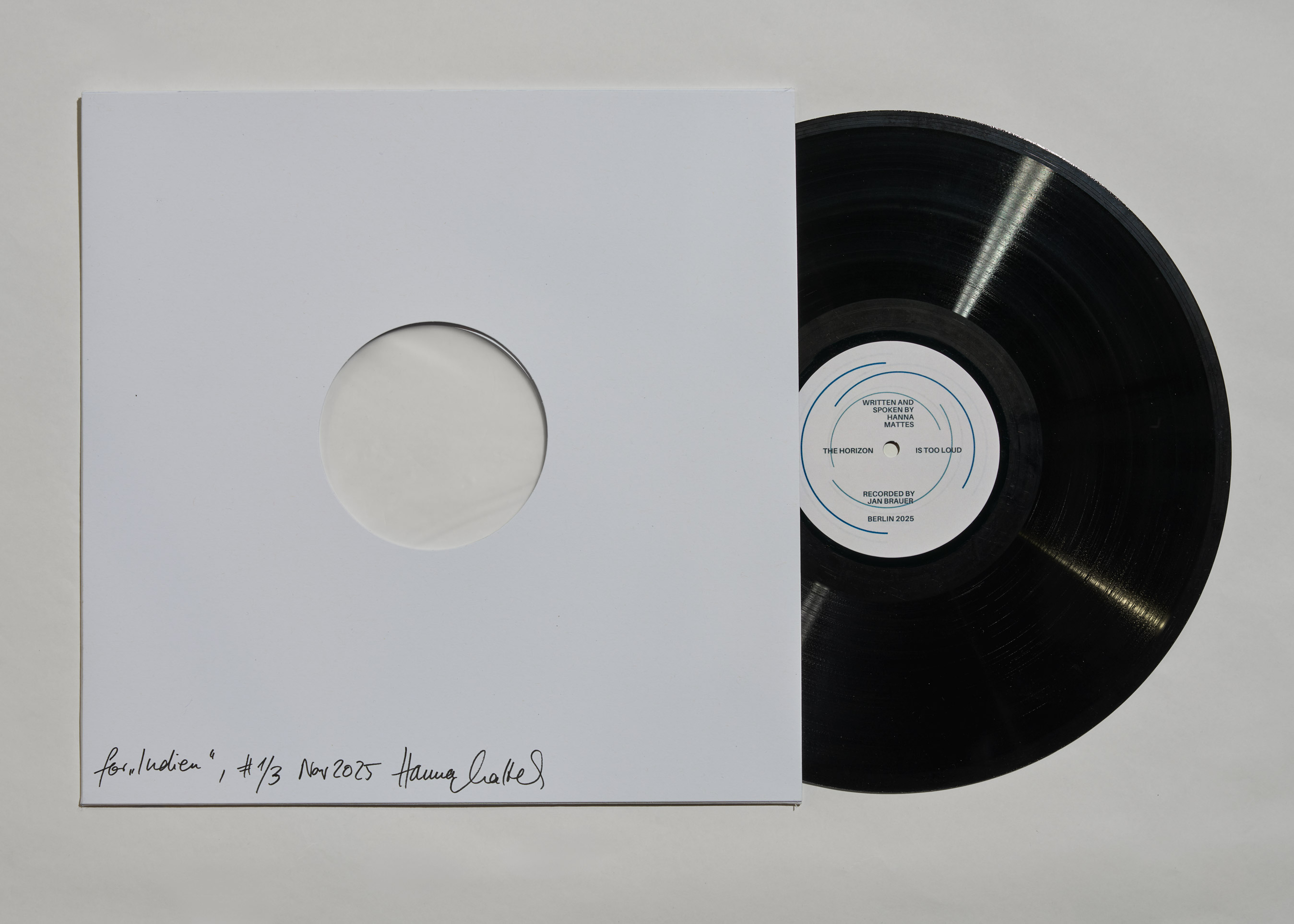
Hanna Mattes, The Horizon Is Too Loud, 2025
vinyl, written and spoken by Hanna Mattes, recorded by Jan Brauer, 31.5 x 31.5 cm
£210 (ex. VAT)
Part I: India
Eva: “So, we left the house in the South, because there was the abandoned man. And it was hard for me—to leave him, to leave the garden, to leave everything. But then Hanna said: Mama, forget the man, forget the garden, let’s make our own garden, let’s have our own house.”
Hanna (with the grave face of a small girl who’s always been wise): “Sometimes you have to close the doors so the keys don’t cry.”
Eva: “I thought, this is madness, we weren’t even looking. And yet suddenly there it was, the house, standing there as if it had been waiting. My friend had the key—of course. Houses always have friends who keep their keys in their pockets.”
The House (whispering, faintly pleased with itself): “You can call me India. I waited a hundred years for two women brave enough to give me the wrong name so everything could be right.”
Eva: “From the start, it was our project—only, Hanna is the one who truly worked the house into being. She dragged out rubbish, sorted mysteries into boxes, hauled and heaved and argued with dust until rooms remembered themselves. She even conjured a kitchen out of almost nothing—pots balancing like acrobats, spoons settling in as if they’d signed a lease. I stood there thinking: that’s not improvisation, that’s witchcraft.”
Hanna: “Every house needs muscles before it can dream. Walls won’t whisper until you sweep their throats clean.”
Eva: “Meanwhile, I took the garden. A dry, stubborn patch looking at me with raised eyebrows. I began to beackern it—half scolding, half coaxing—the kind of work women do that turns a piece of ground into a room. She built the rooms inside; I negotiated with weeds outside. Together we made the place laugh again.”
Hanna: “Echt? Voilà. Ist doch irre, und wir haben es aber nicht geplant. Ja.”
Eva (nearly spilling her coffee from laughing): “Exactly! We didn’t plan any of it—and yet here we are, living inside the punchline of our own joke.”
Hanna: “People ask, are you going to India? I say: we’re already there. India is a house, a project, a key—and a cupboard that giggles every time we open it.”
(They laugh again, and the plates rattle politely, as if to say: finally, someone is telling it properly.)
Part II: Compass
Interviewer (placing a tiny voice recorder on the table; it flutters once, then settles like a tame moth): “Your work is full of horizons. Why?”
Hanna: “What was so striking on that ship—maybe not only the Pacific, but anywhere at sea—is that there was no light. In the Pacific it was always misty, so much water in the air that we hardly ever saw stars. Almost no clear nights at all. It was simply black. The night was absolutely black. That’s in my text too.”
Eva: “It was really frightening. Richtig, richtig gruselig. You saw nothing. I went out on the balcony and looked into the water and thought immediately: monsters will come out of this. Just deep darkness. Unten und oben.”
Hanna: “Everywhere black. Totally mad. For twenty days, I took one photo of the horizon each day—the same, and never the same. But for me, the work became about something else. I had never thought about waves before. Yet when you look at them every single day, you begin to see differently. A wave isn’t only two bodies colliding and breaking—it carries thousands of tiny movements within it. In the great forward surge, you can see countless little surges, all moving together. It’s a pattern of repetitions, like a secret choir rehearsing. There is a word for it—wave piloting—old knowledge once read with skin and bone, maps almost lost.”
Eva: “And that is where the compass appears. Not north, south, east, west, but something else entirely: to stay still, to listen, to laugh. Hanna’s gaze is my compass. Sometimes I think she’s been steering me longer than I ever steered her.”
Hanna (laughs, brushing salt from her sleeve): “Mama, I’ve told you that forever. You just need the right horizon. Or the right kind of laughter.”
The Sea (softly, through the recorder’s red light): “Compass, house, daughter, mother—all the same. As long as someone reads the waves.”
Eva: “It has always been like that. When Hanna was a baby, I nursed her during a thunderstorm. A thunderclap shook the whole house, so loud my body trembled. She was asleep, but she opened her eyes—calm, enormous, certain. As if to say: Don’t be afraid, Mama. I’m here. And in that moment, I understood: it isn’t only the mother who carries the child. The child carries the mother too. From the beginning, it has been mutual. Grief, too, is a kind of weather; funerals gather people the way shorelines gather driftwood. She has always had this determination.”
Hanna: “Every family has a map. Ours is drawn in waves. Some inherit jewellery; I inherited storms and patience. Mama gave me rhythm. I only adjusted the compass.”
Eva: “And she gave me the horizon—an eye that looks forward. Perhaps she was steering from the very start. Since we live just one floor apart now, proximity writes our forecast.”
(When the room has thinned to steam and porcelain, Eva touches my sleeve and, almost in a whisper, says: dušo moja. The house seems to hold its breath. In that hush I hear my grandmother answer—srce moje. Three small words crossing the kitchen like a tide, a compass I fold into my pocket.)
Part III: Sweet-Wrappers
Eva: “I used to call it just play, or kitsch, or basteln. But Hanna kept saying: No, Mama, it’s art. If I put the cup here and say it is art, then it is art. And the house seemed to nod.”
Hanna: “Exactly. Art doesn’t wait for permission. It waits for scissors, for glue, for glittering papers to hang themselves into sky.”
Eva: “I hung them on strings, hundreds of them. From the ceiling, like a mirror-sea. A curtain made of sugar-light. One side loud—rabbits, Santas, bright logos. The other quiet, only colour, only shine.”
Hanna: “When you stand beneath it, it rustles. As if each wrapper is whispering the name of the person who unwrapped it. A whole genealogy of sweet teeth. Our heritage in foil.”
Eva: “Louise Bourgeois had her giant spiders, and I have my praline constellation. If I saw it in a museum by someone else, I would say: brilliant, breathtaking, I wish it were mine. And then I laugh, because it is mine. It came from my kitchen – where work becomes weather and weather becomes art.”
Hanna: “Printed small on high-gloss paper, the horizons keep the same gleam as the foils, a conversation of surfaces. From your hands. From cupboards that rattle when you laugh.”
Eva: “Every time I hang the foils, I think of the sea again—the way horizons shimmer when light bends on water. It’s the same trick. Only this time, instead of waves, I have chocolate and laughter.”
The Wrapper (giggles): “Once I was a tiny scrap of gift. Now I am an ocean. Isn’t that sweet?”
(They laugh again, and this time the laughter sounds like hundreds of little foils fluttering in the wind—loud and soft together, a choir of sugar and light.)

Installation View
Enquiries
Please contact us directly via gallery@belmacz.com with any enquiries. Note that all works are subject to prior sales and tax where applicable.





